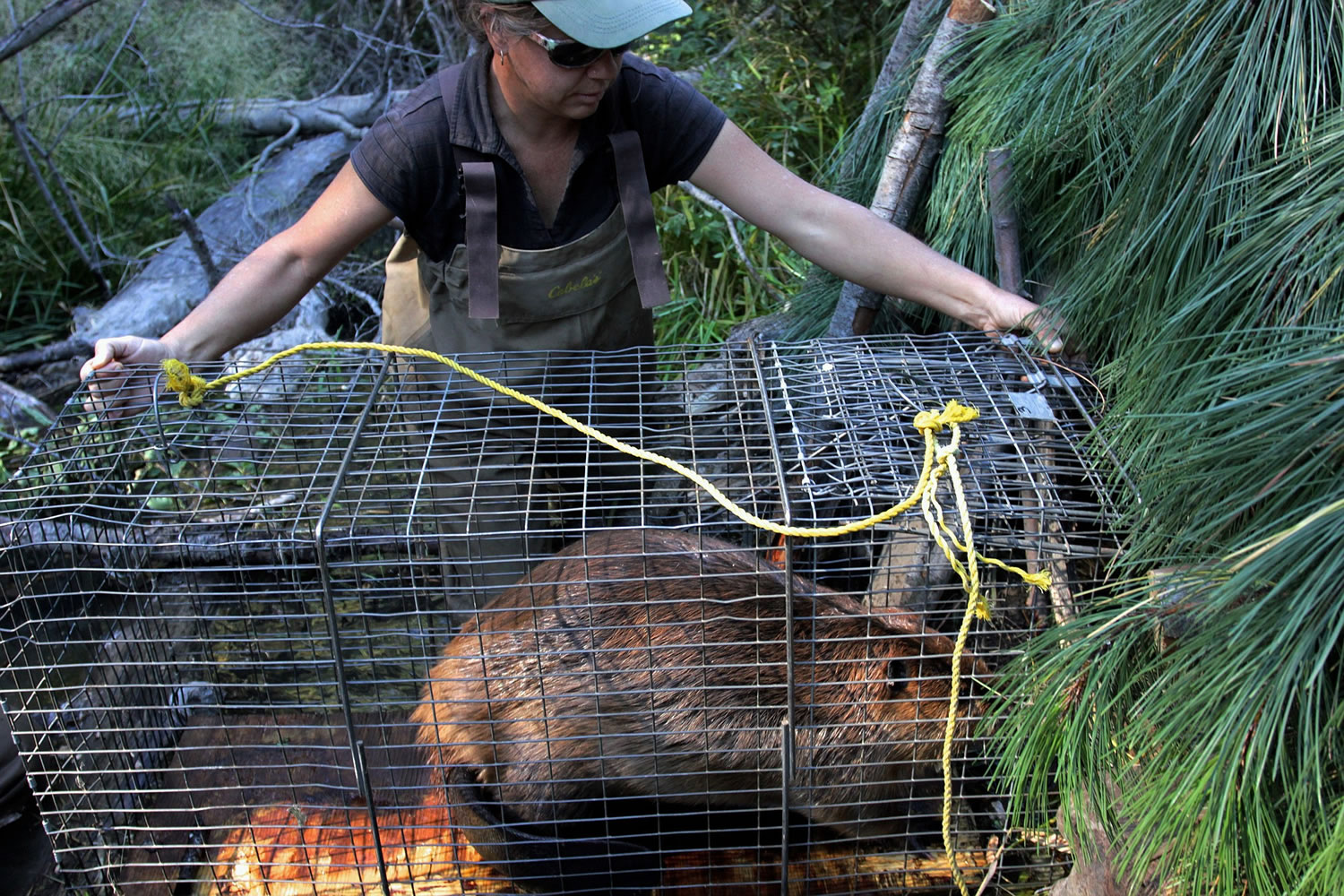ELLENSBURG — In a heavily irrigated Washington valley where fish, crops and people often compete for water, biologists are turning to one of nature’s best engineers to help restore streams and salmon habitat.
Landowners typically trap or kill beavers that block irrigation canals and flood homes in the Yakima Valley. But one project is relocating the troublemaking creatures to the headwaters of the Yakima River, where their talent for chewing willows and constructing lodges can be put to good use.
“Beavers can be really destructive, but in the right places, they can be good ecosystem engineers,” said Mel Babik, project manager with the Mid-Columbia Fisheries Enhancement Group, a nonprofit that works to restore salmon populations.
In Washington, Oregon, Utah and other parts of the West, beavers increasingly are being used as an effective, low-cost tool to help restore rivers.
Beaver dams, ponds and other structures add complexity to an ecosystem, slowing the flow of water and sediment downstream. Salmon and other fish take advantage of pockets of slow water to rest, feed and hide.
Meanwhile, beaver ponds help store water on the surface as well as underground.
“The water stored underground comes out during a time of year when fish need cold water and farmers need it, too,” said William Meyer, who coordinates the Yakima Basin water resources plan for the state Department of Fish and Wildlife.
Decades, even centuries ago, it wasn’t uncommon for people to enlist the help of beavers, but interest has been renewed as communities confront declining salmon runs and water supply issues.
In the 1930s, people were realizing streams and rivers without beavers were struggling, said Joe Wheaton, a geomorphologist and assistant professor at Utah State University who has studied the beaver’s role in accelerating river restoration. A 1949 article in Popular Mechanics described how Idaho wildlife officials relocated beavers to mountain streams by parachuting them in.
“People are looking for innovative new things to try, and even if it’s not new, we refer to it as cheap and cheerful restoration,” Wheaton said.
The Yakima Beaver Project is modeled after a similar one in north-central Washington’s Methow Valley.
Using a grant from state salmon-recovery money, biologists take calls from landowners with beaver problems in urban and agricultural areas. If the animals can’t be managed on site, the group moves them to tributaries in the upper Yakima River.
The group has relocated 126 beavers over four years. About half stick around and build dams near where they were transplanted. Others are killed by predators or return to where they were trapped. One beaver swam 40 miles to reunite with his mate.
Trapping and killing beavers is legal in Washington, and between 1,000 and 2,000 are trapped each year, state officials said.
The nocturnal mammals build structures to flood areas so they can protect themselves from predators.
In one case in the Yakima Valley, a beaver family built a 13-foot-tall dam that flooded a resident’s home. The landowner was unable to dismantle the structure, so Babik, the project manager, and her team trapped the dad and six kits.
The beavers were kept at a holding facility on the Yakama Nation for several days and then driven to a Yakima River tributary.
From there, Babik, interns from Central Washington University and others carried the beavers in heavy cages about half-mile on a dirt trail. Some group members had gone in the day before and built a temporary lodge in the small stream to help the family get started.




